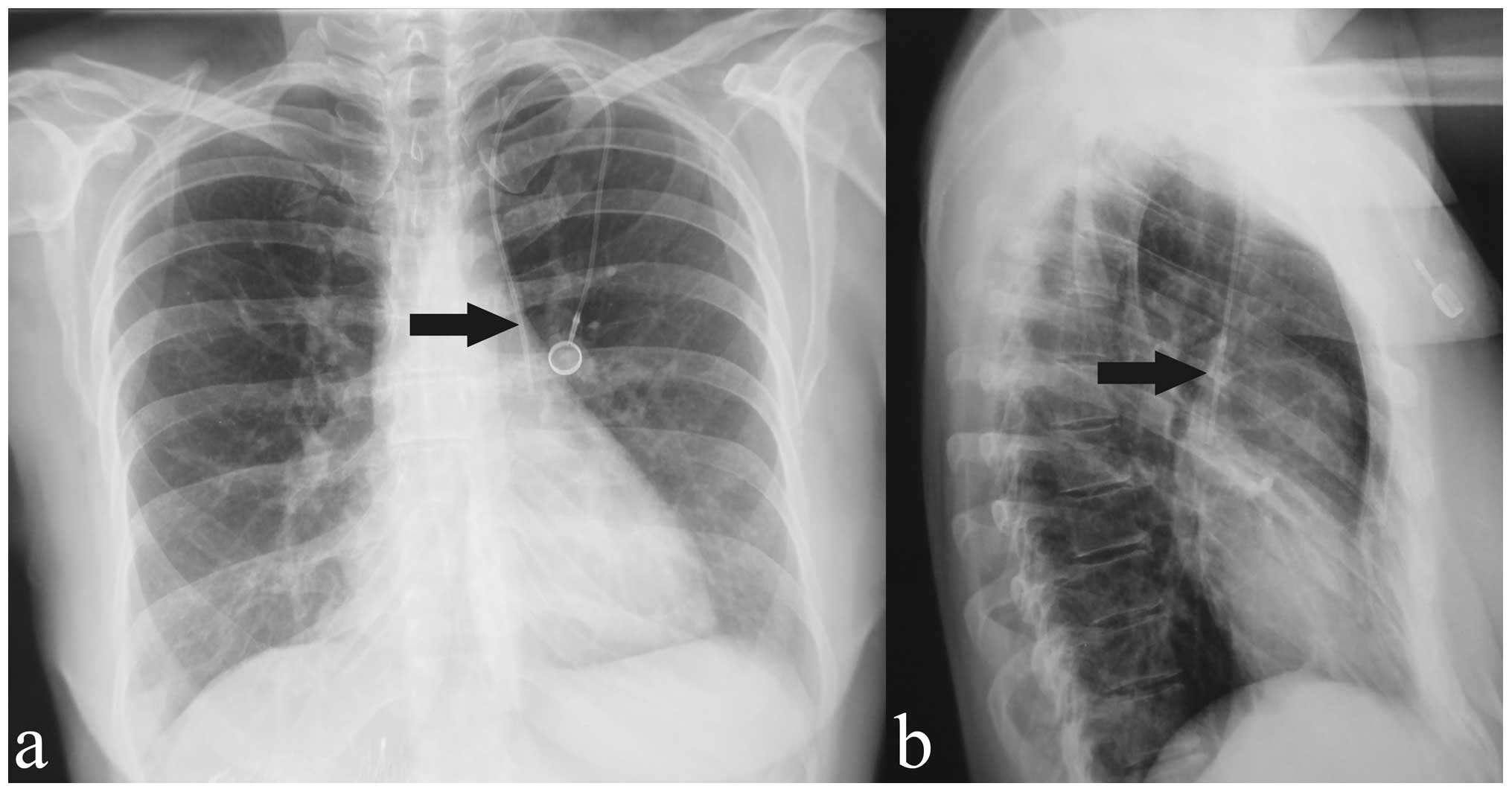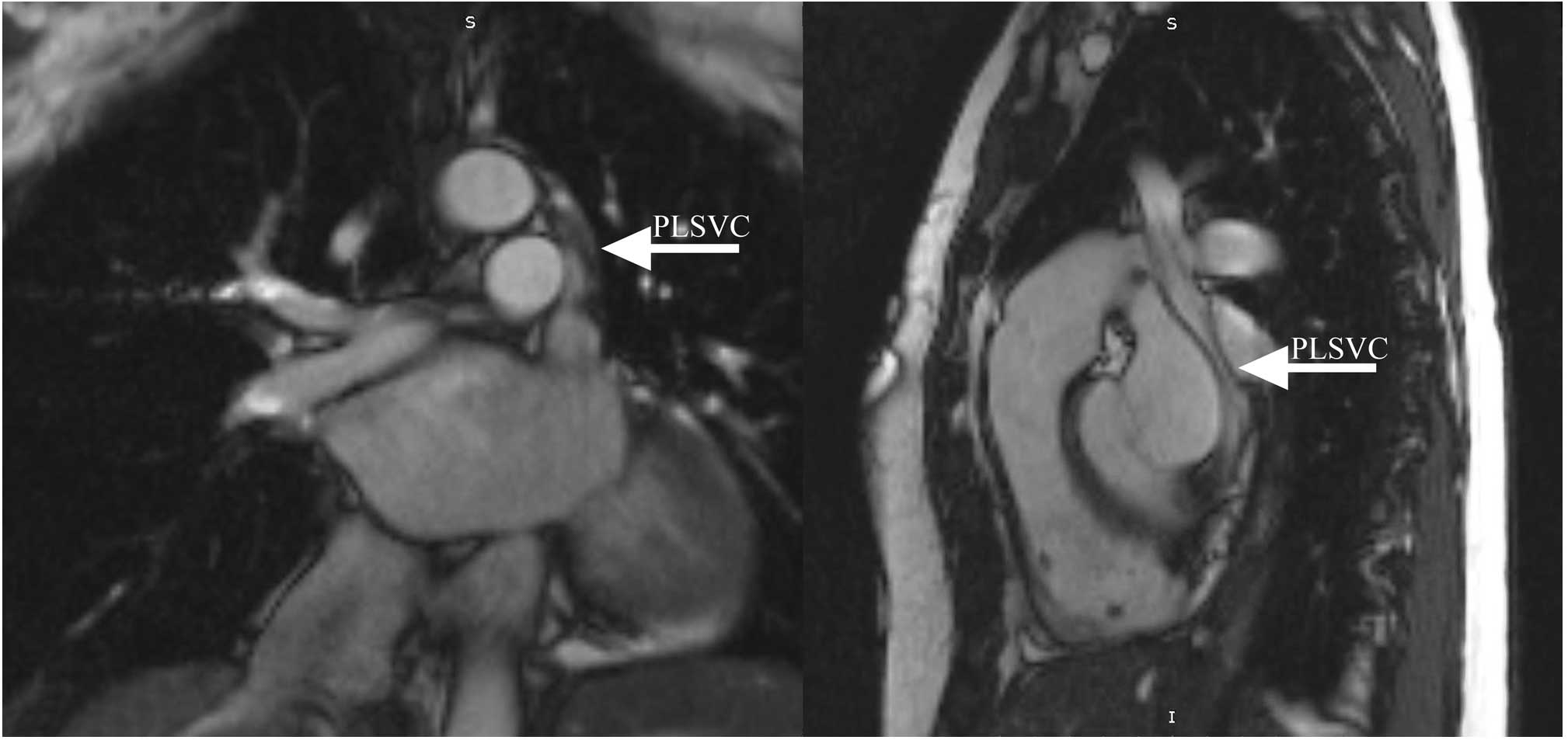Persistent left superior vena cava: A possible contraindication to chemotherapy and total parenteral nutrition in cancer patients
- Authors:
- Francesco Iovino
- Pasquale Pio Auriemma
- Luca Del Viscovo
- Sara Scagliarini
- Marilena Di Napoli
- Ferdinando De Vita
-
View Affiliations
Affiliations: Division of General Surgery, Department of Anesthesiological, Surgical and Emergency Sciences, Second University of Naples, Naples, Italy, Division of Radiology, ‘F. Magrassi - A. Lanzara’, Department of Clinical and Experimental Medicine and Surgery, Second University of Naples, Naples, Italy, Division of Medical Oncology, ‘F. Magrassi - A. Lanzara’, Department of Clinical and Experimental Medicine and Surgery, Second University of Naples, Naples, Italy
- Published online on: July 18, 2012 https://doi.org/10.3892/ol.2012.808
-
Pages:
759-762
Metrics:
Total
Views: 0 (Spandidos Publications: | PMC Statistics:
)
Metrics:
Total PDF Downloads: 0 (Spandidos Publications: | PMC Statistics:
)
This article is mentioned in:
Abstract
Persistent left superior vena cava (PLSVC) is the most common thoracic venous anomaly. Awareness of this condition may be useful when placement of left-side transvenous subclavian or internal jugular catheters is required. This anomaly may be detected only by chest radiograph following placement of the catheter. The primary endpoints of this study were to analyze the prevalence of PLSVC, measurement of its diameters and the outcome of cancer patients with this anomaly undergoing placement of a long term catheter for nutrition and chemotherapy at the Department of Surgery, of the Second University of Naples, Naples, Italy. A total of 600 consecutive adult patients with hematological or solid tumors admitted to our surgery department for implantation of a central venous catheter (CVC) were considered. The CVC was routinely implanted in the left internal jugular vein under ultrasound guidance. Four cases of PLSVC (0.6% of patients) were observed and confirmed using cine magnetic resonance imaging (MRI). In all cases, the CVC was not removed. Three patients underwent chemotherapy and one patient was subjected to total parenteral nutrition. In the three patients undergoing chemotherapy, dynamic ECG and echocardiography were performed at the end of the treatment. No disturbances of the cardiac rhythm or thrombosis were detected, and heart ejection fraction (EF) was not affected. In conclusion, although PLSVC may be a risky condition, no complications occurred in our study. Thus, PLSVC should not be regarded as a strict contraindication to infusion of chemotherapy or hyperosmolar nutritional solutions. However, further research is needed to confirm our data.
View References
|
1.
|
SK GoyalSR PunnamG VermaFL
RubergPersistent left superior vena cava: a case report and review
of literatureCardiovasc
Ultrasound650200810.1186/1476-7120-6-5018847480
|
|
2.
|
T SaranteasC MandilaJ PoularasJ
PapanicolaouA PatriankosD KarakitsosA KarabinisTransesophageal
echocardiography and vascular ultrasound in the diagnosis of
catheter-related persistent left superior vena cava thrombosisEur J
Echocardiogr10452455200910.1093/ejechocard/jen33419252187
|
|
3.
|
LF ParreiraCC LucasCC GilJD
BarataCatheterization of a persistent left superior vena cavaJ Vasc
Access10214215200919670178
|
|
4.
|
R PahwaA KumarPersistent left superior
vena cava: an intensivist’s experience and review of the
literatureSouth Med J9652852920038363033
|
|
5.
|
L CavannaG CivardiD VallisaC Di NunzioL
CapucciatiUltrasound-guided central venous catheterization in
cancer patients improves the success rate of cannulation and
reduces mechanical complications: A prospective observational study
of 1,978 consecutive catheterizationsWorld J Surg
Oncol89198201010.1186/1477-7819-8-91
|
|
6.
|
C Gonzales-JuanateyA TestaJ
VidanPersistent left superior vena cava draining into the coronary
sinus: Report of 10 cases and literature reviewClin
Cardiol27515518200410.1002/clc.496027090915471164
|
|
7.
|
F IovinoM PittirutiM BuononatoF Lo
SchiavoCentral venous catheterization: complications of different
placementsAnn Chir12610011016200111803622
|
|
8.
|
P VociG LuziL AgatiDiagnosis of persistent
left superior vena cava by multiplane transesophageal
echocardiographyCardiologia4027327519957553698
|
|
9.
|
B SarodiaJ StollerPersistent left superior
vena cava: case report and literature reviewRespir
Care45411416200010780037
|
|
10.
|
A RecuperoP PugliattiF RizzoS CarerjG
CavalliPersistent left-sided superior vena cava: integrated
noninvasive
diagnosisEchocardiography24982986200710.1111/j.1540-8175.2007.00509.x17894578
|
|
11.
|
VB KuteAV VanikarMR GumberPR ShahKR
GoplaniHL TrivediHemodialysis through persistent left superior vena
cavaIndian J Crit Care
Med154042201110.4103/0972-5229.7822321633545
|
|
12.
|
E WissnerR TilzM KonstantinidouA MetznerB
SchmidtKR ChunKH KuckF OuyangCatheter ablation of atrial
fibrillation in patients with persistent left superior vena cava is
associated with major intraprocedural complicationsHeart
Rhythm717551760201010.1016/j.hrthm.2010.08.005
|
|
13.
|
L LaurenziS NatoliL PelagalliME MarcelliD
AbbattistaL CarpaneseE ArcuriLong-term central venous
catheterization via persistent left superior vena cava: a case
reportSupport Care Cancer11190192200312618930
|
|
14.
|
RG PaiEchocardiographic features of
persistent left superior vena
cavaEchocardiography16435436199910.1111/j.1540-8175.1999.tb00088.x11175173
|











